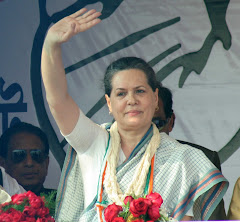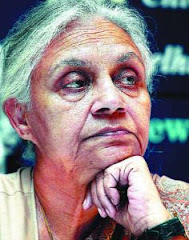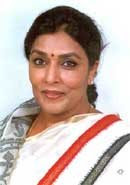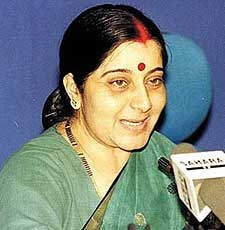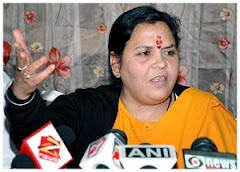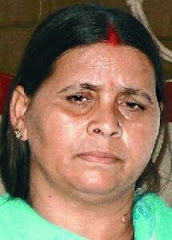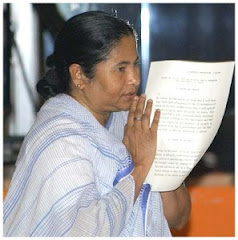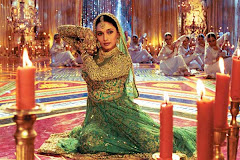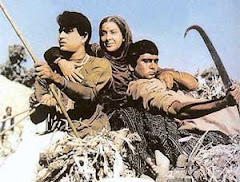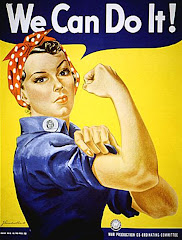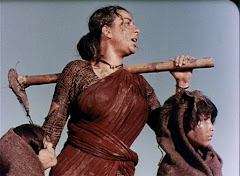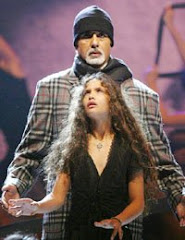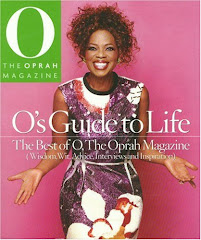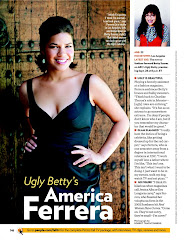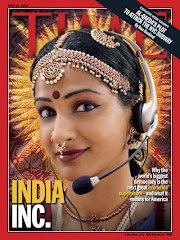Same ramblings could be heard in India when Pratibha Patil, Governor of Rajasthan, was nominated for the position of head of the state. While Sarah Palin and Hillary Clinton were facing sexist remarks in the US in recent elections, India had already taken a lead by appointing Pratibha Patil, as the first woman president of India.
Through this journal I will explore four arguments made in the chapter in the context of the contribution of women in Indian politics and show how women in politics have come a long way.
"Women and politics are antithesis of each other" (p.8a7).
It is widely believed that this line of thought is common in Asian societies, where politics is often considered to be a male realm and viewed as an arena where dishonesty, bribery, corruption and violence are rampant. But interestingly, it is here, that the world’s most powerful and influential political female icons have made a strong mark. From Indira Gandhi, the first woman Prime minister of India to the first woman president of the Congress, Sonia Gandhi, Jayalalitha, Sheila Dikshit, Mamata Banerjee, Sushma Swaraj, Renuka Chaudhary, Vasundhara Raje Scinidia, Uma Bharati, to Brinda Karat, all exemplify the ability of a small group of highly educated Indian women to occupy the highest positions in the country’s politics. Women may be “traditional symbols of innocence and virtue”, but it is with these distinct characteristics that women have raised politics, especially in India to a much higher level.
This video about Delhi's Chief Minister, Shiela Dikshit, who won the state elections for the third time in a row stands testimony to the fact women in politics have not only arrived but are here to stay. Completely contrary to the stereotypical image of politicians in India, she is educated, level headed and not corrupt. She has and is leaving indelible marks on the political canvas of Delhi by becoming the most promising and consistent politician. This clearly shows that women and politics are not antithesis of each other. And also that a woman politician brings into politics, wisdom, balance, pragmatism, thrift and sensitivity to incorporate issues of traditional concern for women, like health, education and general welfare, which are the stepping stones for a progressive nation.
Another myth is that “for women in politics family life still is a concrete barrier for women’s participation in politics” (p. 89) and most of the women politicians tend to remain single or without children.
 Rajiv Gandhi, Indira Gandhi and Sanjay Gandhi
Rajiv Gandhi, Indira Gandhi and Sanjay GandhiLooking back at Indira Gandhiwho became the first woman Prime Minister of India in 1966, the above statement appears to be in total contradiction. Indira joined politics when she was single and remained in politics even after her marriage. Her family, in no way was a barrier to her political career. Even after giving birth to two sons, she remained rooted in the Indian National Congress. Widowed at a very early stage of her political career, she continued to successfully run the country despite personal adversities. After her husband’s demise the whole responsibility of taking care of the children and heading the Indian National Congress came on her shoulders. And this was the time when she took both the responsibilities head on and proved her critics wrong by balancing both her career and family life aplomb. Her success is seen specially in the maturing of Rajiv Gandhi as the young face of modern India when he took over as a Prime minister.
Today she continues to be revered and respected as the Iron lady of India who made the world sit up and notice her.

Mahatma Gandhi and Sarojini Naidu (1930)
Sarojini Naidu was a freedom fighter and poet. She was the first Indian woman to become the President of the Indian National Congress and the first woman to become the Governor of Uttar Pradesh. What is to be noted here is that she had a happy family life, which at the same time epitomized a breakaway from the social norms of the times. She married Dr. Muthyala Govindarajulu Naidu at the age of 19, at a time when inter caste marriages were not allowed. She was an active and avid political figure with a family with four children to take care of.
Examples of prominent leaders like Shiela Dixit, Sonia Gandhi, Sarojini Naidu, Sucheta Kriplani, Renuka Choudhary and Rabri Devi belie this statement, demonstrating how they never ever allowed politics to detract them from their families or vice versa.
“Female celebrity is still built primarily on the appearance of the body, and the instability of changing appearances is not the kind of reliable image that a politician would want to project for hersel” (p.94).
This is definitely not true of the country where I am from, because women may be objectified in the field of entertainment but female politicians are up on a pedestal. The only fashion statement that they make is through their reforms and new proposals to the Parliament. India has a tall history of women politicians like the queen of Jhansi, who while being exemplified as leaders are also worshipped and eulogized for their image of motherhood. Thus while in US parliament there is a hue and cry over Hillary Clinton’s cleavage show, in Indian parliament women traditionally clad do not defy the Indian culture.
Let us assess this video in the light of the above argument. Here Sonia Gandhi is the focus of attention by the media and in that sense, is a celebrity. But her celebrity status is not primarily based upon her appearance, body, or looks. It is her stature, her actions and her life history that make her a celebrity. The attributes of a strong woman are talked about in the video and not her appearance.
What is interesting is that be it Mayawati, the Dalit leader’s staid suit, Uma Bharti’s orange attire of a sanyasin, the face of the fundamentalist Hindutva, Priya Dutt’s khadi kurta or Sonia Gandhi’s cotton saree, these remain their never changing signatures. The consistent image in fact, reinforces that they mean business and are not here to draw attention to themselves but to their work. This very spirit ironically gives them a celebrity status.
“Controversial first ladies like Rosalyn Carter, Nancy Reagan, and ultimately Hillary Clinton have all been perceived as taking the center stage at the expense of the husband’s position” (p.96)
Indian mainstream politics is often criticized for being an arena dynastic rule. Indira Gandhi took her father Nehru’s seat, Sonia Gandhi grew out of her husband, Rajiv Gandhi’s public stature. However, there are also many instances of women politicians who have come into their own by their sheer determination and effort, not as a part of legacy.
Mayawati, the current Chief Minister of Uttar Pradesh, came from a non discript Dalit family and entered politics after completing her education in law and Administrative Services. In this video Mayawati clearly displays her determination for not only achieving effective administration in the most populated state of India but also to achieve her political ambitions.
One can point out many such examples from Indian politics like Sarojini Naidu, Jayalalitha, Renuka Chowdhury, Mamata Banerjee, Uma Bharati to name a few.


